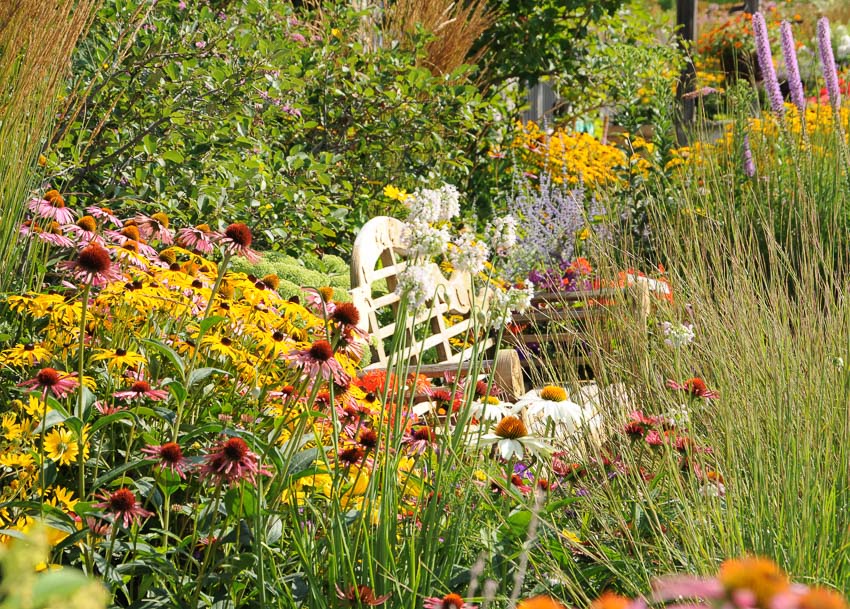Learn how to grow a meadow of wildflowers with this step-by-step guide. Explore why people turn their lawns into wildflower meadows and find the best spot in your yard to grow one.
Understanding What a Meadow of Wildflowers Is
More and more people are looking for lawn alternatives, and one of the most popular options is to plant a wildflower meadow. Learn more about wildflower meadows and discover the benefits of turning your green lawn into a haven of flowers.
Definition and Purpose
There is almost nothing more romantic than a wildflower meadow in full bloom, and it’s easy to imagine your yard teeming with life and bursting with flowers.
Grass lawns, while attractive and aesthetically pleasing, are high maintenance. Even worse, they are monocultures that don’t support biodiversity. The more pesticides, herbicides, and synthetic fertilizers you throw on your lawn, the less biodiversity there is.

Globally, there is a concerning decline in insect populations, and many people attribute that to how lawns are cultivated. The chemicals used on grass, many aimed at killing insects like ticks in your yard, have significantly impacted the biodiversity in urban areas.
Diversity of Species
Before you celebrate insect populations declining, it’s important to understand how important they are to the global food supply.
Many insects are beneficial pollinators who pollinate important crops like tomatoes, avocados, apples, and cranberries. About ⅓ of the global food supply relies on insect pollination.
One of the best ways to support biodiversity in your area is to grow a wildflower meadow rich in pollen and nectar for insects and birds. Meadow wildflowers also provide bird seed and nesting areas and create habitat for small wildlife.
Low Maintenance Gardening Solution
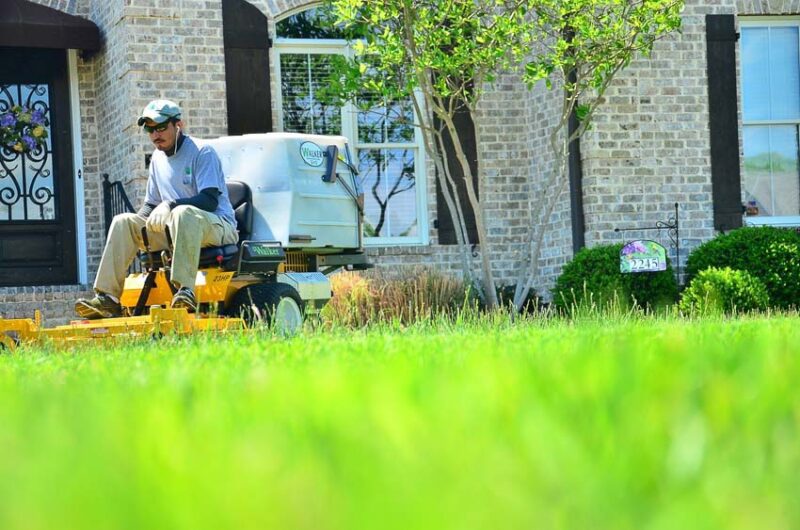
People in the United States spend about $40 billion on lawn care each year. The average person in the US spends about 70 hours per year caring for their lawn and garden.
Lawns have been popular for decades. Nonetheless, they are high maintenance, and only some people want to spend all their free time caring for their lawns. If you’re looking for low-maintenance gardening solutions, wildflower meadows are an excellent solution.
Choosing the Right Location for Your Wildflower Meadow
Before growing a meadow of wildflowers, you need to select the right location. Site evaluation is a critical step to successfully growing a wildflower meadow, and the amount of sunlight and soil conditions are critical factors to consider.
Sunlight Requirements
When choosing the right location for your wildflower meadow, the first step you need to look at is how many hours of sunlight your location receives.
Wildflower seed mixes comprise a blend of perennial flowers and self-seeding annuals. Most wildflowers like full sun, so the best location is an area with at least six to eight hours of sunlight each day.
If you don’t have a full sun location, many of the species in wildflower mixes will thrive in partial shade, and some wildflower mixes are developed specifically for shady areas.
Partial shade wildflower mixes do best with at least four to six hours of sunlight each day. Most areas in your yard receive at least that much. Avoid planting your wildflower meadow on the north side of your house because it will be too shady.
Once you decide where to put your wildflower meadow, analyze the sunlight and shade conditions. Then be sure to purchase a well-suited wildflower seed mix for your chosen location.
Soil Conditions
The next step you need to consider is the soil composition. It’s important to understand the basic type of soil that you have. Is it mostly clay, or is it sandy soil?
Fertile, well-drained soil is best for most plants, but wildflowers are some of the least picky plants you can grow. It will probably be fine if you’re not planting your wildflower mix in a desert or a swamp.
Growing a wildflower meadow is a lot different from growing a lawn. One of the best things about wildflower meadows is that many of these plants will thrive in low-fertility soil conditions.
Size and Scale
Wildflower plantings can be any size. Some people with small yards plant wildflower mixes as borders, and you can even turn a flower bed into a wildflower garden.
The size of your wildflower meadow will likely depend on how much land you can devote to it, but it also requires some work to establish your wildflower meadow. You can always start small and add more to it each year.
If you’re planting for biodiversity, the smallest recommended size for a wildflower meadow is about 400 square feet, which is 20 feet by 20 feet.
The national average lawn is about 10,000 square feet, and most people can justify a 400-square-foot wildflower meadow in their yard.
How to Grow a Meadow of Wildflowers
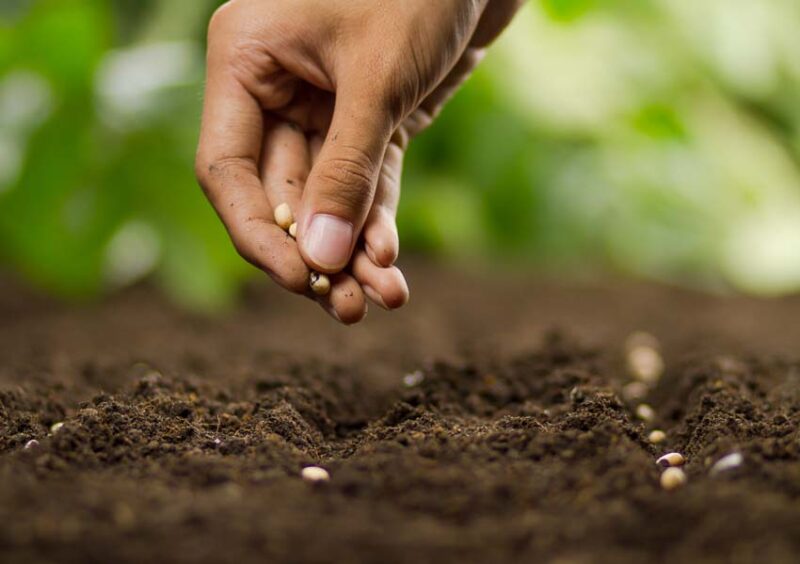
Growing a meadow of wildflowers isn’t difficult. Follow these strategies and techniques for the best results.
Seed Selection
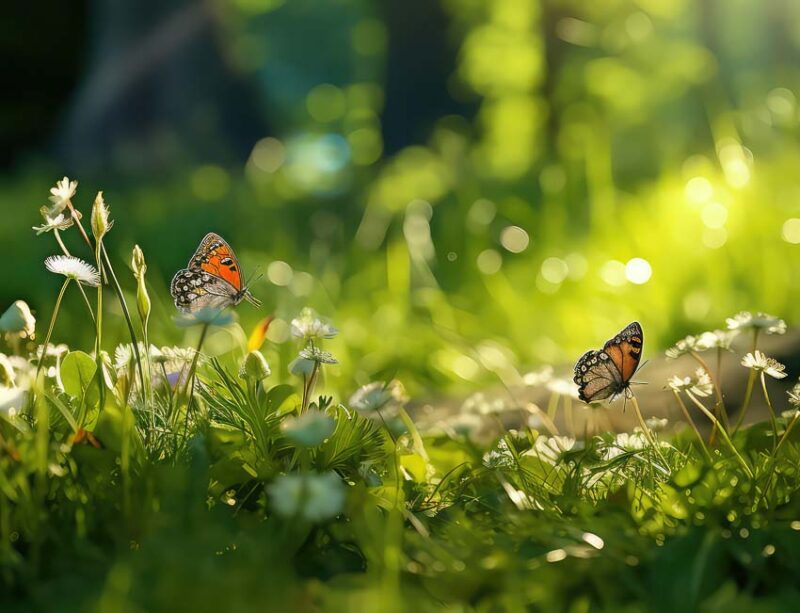
There are hundreds of wildflower seed mixes to choose from. Selecting the right one for your climate and region is the best way to ensure success.
Here are some common specialty seed mixes:
| Wildflower seed mix | Description |
| Wildflower Pollinator Mix | 13 plants that attract birds, bees, and other pollinators |
| Save The Monarchs Wildflower Seeds Mix | Includes milkweed, Echinacea, and wall flowers to attract monarchs |
| Hummingbird and Butterfly Wildflower Mix | 23 annuals and perennials to attract butterflies and hummingbirds |
| Save the Bees Wildflower Collection | Features milkweed, poppy, and lupine, and 16 other wildflower plant seeds |
| Drought Tolerant Wildflower Mix | High-quality seed mix without fillers for drought-tolerant regions |
| Partial Shade Wildflower Mix | For areas that get 4 to 6 hours of sunlight each day |
| Deer Resistant Wildflowers | Great blend that attracts bees, butterflies, and birds having to worry about deer |
Timing and Planting
The best time to plant wildflower mixes depends on your climate and region.
Zones 1 to 3
The best time to plant wildflower meadows in Zones 1 to 3 is in the spring. Winters are bitterly cold in these regions, and you’ll have a better germination rate if you plant in the spring as soon as the ground can be worked.
Zones 4 to 6
In the same way that fall is the best time to plant grass in the cool climates of Zones 4 to 6, it’s also an optimal time to plant wildflower mixes. Fall is when wildflower plants naturally drop their seeds. The seeds overwinter under leaf litter and snow until temperatures rise in the spring when they germinate.
Zones 7 to 11
In warmer climates in the United States, you can plant wildflower seed mixes from September to January, depending on the climate in your region.
You can plant wildflower seed mixes in Zones 7 to 11 throughout the fall and winter, as long as the ground can be worked. Spring is also a good time to plant wildflower mixes in these climates.
Planting Techniques
Soil preparation may be the most important step in mastering how to grow a meadow of wildflowers. The more time you take to prepare the soil, the better soil-to-seed contact you will have, and the better chance your seedlings will have to grow.
Step 1: Remove Vegetation
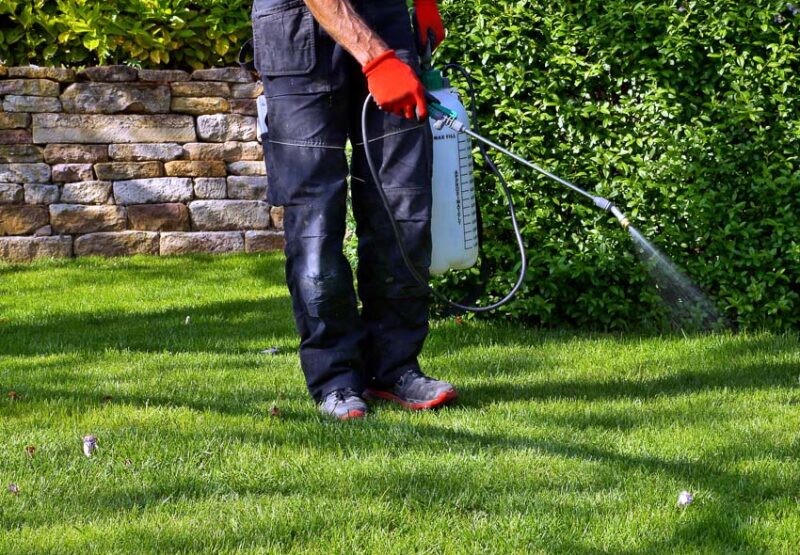
Depending on the location, soil type, and amount of vegetation, the hardest part of planting wildflower seed mixes is removing the vegetation.
Wildflower mixes won’t grow as well if the seed is sown directly on the ground, and they can’t make contact with the soil. The seeds need adequate light and water, which thick vegetation will block.
You can try a few methods when removing vegetation:
- Manual removal using shovels, rakes, hoes, and other hand tools.
- Rototilling with a rear-tine tiller. You can purchase or rent a tiller if you don’t have one.
- Herbicide application, which makes it easier to remove the dead vegetation after about 10 to 14 days.
- Solarization using clear plastic. It takes about a month to kill grass and weeds, making them easier to remove.
Another method is to use a sod cutter to cut swaths of grass. The goal is to remove as much vegetation without removing topsoil, and sod cutters are an excellent choice when you’re installing wildflower meadows in place of a lawn.
Step 2: Prepare the Soil
The best soil for planting wildflower seed mixes is loose, well-drained soil. The first step is removing the vegetation. Then, you need to loosen the soil and rake it smooth.
Using a rototiller loosens the ground, but then you also need to remove vegetation and roots that got tilled into the soil.
Step 3: Plant the Seeds
Sow the wildflower mix according to the planting rate on the package. Most mixes should be planted at rates of about 1 ounce per 100 to 150 square feet.
For best results, add about 8 to 10 parts of sand to one part of seed. This helps distribute it more evenly, which is more of a challenge because the seeds are all different sizes.
You can use a broadcast spreader for more even distribution with large plantings. For small areas, consider using a hand spreader.
Establishment and Maintenance
Your wildflowers need adequate water in the first couple of years as your meadow continues to grow. It’s hard to weed your wildflower mix because there are so many different types of plants.
First Year
In the first year after planting, it’s important to have patience. It takes time for the perennial plants to get fully established and bloom profusely.
Annual plants will likely dominate your wildflower meadow the first year. They are fast-growing and bloom abundantly. If they get too thick and your perennial seedlings can’t get water or light, you can mow the annuals down to a height just above the perennials.
Second Year
In the second year, you can reseed bare areas. If the annual flowers reseeded themselves and blocked the growth of the perennials, you can treat them as weeds and get rid of them. Water the wildflower meadow during dry spells.
Third Year
By the third year, your wildflower meadow is naturalizing. The perennial flowers will take over the area; if you want annuals, you may need to reseed them. Depending on your climate, you may only need to water your wildflower mix a couple of times during the hottest part of summer.
FAQ: Common Questions About How to Grow a Meadow of Wildflowers
1. Can I grow a meadow of wildflowers in my backyard?
Many people grow small wildflower meadows in their backyards, and some even grow them in their front yards. While they need to be at least 20 feet by 20 feet to provide the most benefits, even a small flower bed or border planting in your yard is big enough to attract beneficial pollinators.
2. Will a wildflower meadow attract pollinators?
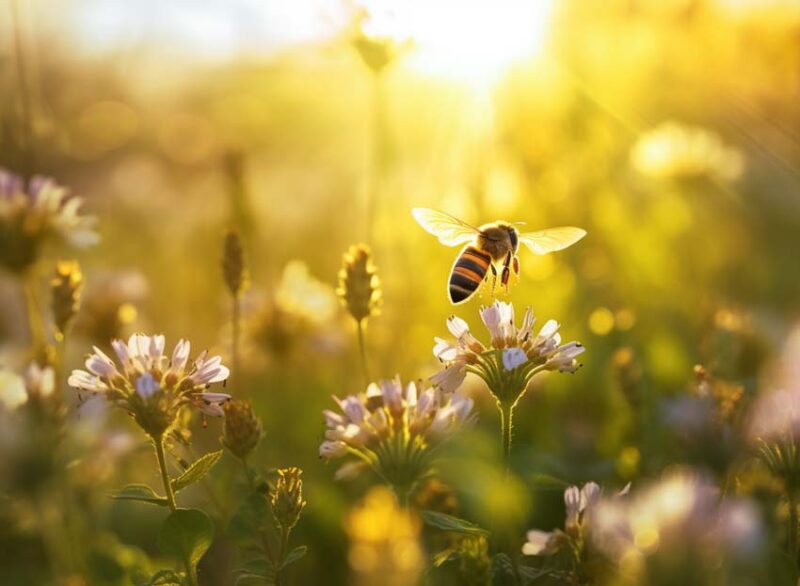
Most wildflower meadow mixes contain seeds for native plants, which are the best for attracting beneficial pollinators. They will attract bees, and many plants in your wildflower meadow will support moths and butterflies with a succession of flowers all season long.
3. Do I need to remove existing vegetation before I grow a meadow of wildflowers?
You should remove existing vegetation before planting a wildflower mix for the best results. Tilling the soil provides the best soil-to-seed contact for the highest germination rates. The best time to plant a wildflower meadow depends on your growing zone, but spring and fall are the best times.
4. How long does it take for a wildflower meadow to establish?
A wildflower meadow takes about three years to fully establish. In the first year, the perennials grow, and the annuals bloom. The perennials start to bloom in the second year, and by the third year, your wildflower meadow will be in full bloom.
5. Is a wildflower meadow suitable to grow in all climates?
Wildflowers grow almost everywhere in the world, but there are different types of wildflower plants for different climates. The best thing to do is find a local seed source for your wildflower mix.
You may not succeed with every plant in the mix, but once it gets established, wildlife may even spread some native seeds into your meadow that will surprise you.

